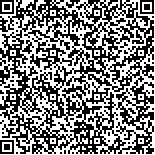| 引用本文: | 叶爱琴,蒋剑平,李润,金靓燕,伍旭明,王建平.衢枳壳黄酮对高脂血症金黄地鼠降血脂作用及其机制研究[J].中国现代应用药学,2020,37(16):1938-1946. |
| YE Aiqin,JIANG Jianping,LI Run,JIN Liangyan,WU Xuming,WANG Jianping.Study on Hypolipidemic Effect of Pure Total Flavonoids from Qu Aurantii Fructus on Golden Hamsters of Hyperlipidemia and Its Potential Mechanism[J].Chin J Mod Appl Pharm(中国现代应用药学),2020,37(16):1938-1946. |
|
| |
|
|
| 本文已被:浏览 10682次 下载 4970次 |

码上扫一扫! |
|
|
| 衢枳壳黄酮对高脂血症金黄地鼠降血脂作用及其机制研究 |
|
叶爱琴1, 蒋剑平2, 李润3, 金靓燕4, 伍旭明2, 王建平2,5
|
|
1.浙江中医药大学附属温州中医院(温州市中医院), 浙江 温州 325000;2.浙江中医药大学附属第一医院(浙江省中医院), 杭州 310006;3.浙江中医药大学, 杭州 310053;4.浙江中医药大学附属杭州西溪医院(杭州市西溪医院), 杭州 310023;5.松阳县人民医院(浙江省中医院松阳分院), 浙江 丽水 323400
|
|
| 摘要: |
| 目的 研究衢枳壳黄酮(pure total flavonoids from Qu Aurantii Fructus,PTFC)对高脂血症金黄地鼠降血脂作用并初步探讨其潜在机制。方法 48只金黄地鼠随机分为6组(n=8):正常组,模型组,非诺贝特阳性对照组(100 mg·kg-1·d-1),PTFC低、中、高剂量组(25,50,100 mg·kg-1·d-1)。高脂饮食喂养金黄地鼠6周,并于第3周起同时给予药物灌胃干预,连续干预4周。高脂饲料喂养造模6周末,处死大鼠,称量大鼠体质量及肝脏质量计算肝脏指数,生化法及ELISA法检测血清生化及炎症指标,血清及肝组织MDA含量和SOD活性。HE染色检测肝脏组织病理学改变,qRT-PCR及Western blotting检测肝脏及脂肪组织PPAR-α、PPAR-γ的mRNA及蛋白表达。结果 与高脂血症模型组金黄地鼠相比,PTFC中、高剂量组的金黄地鼠血清TC、TG、LDL-c、IL-6、TNF-α水平显著下降(P<0.05或P<0.01);PTFC高剂量组血清ALT、AST、GLU水平均明显下降(P<0.05或P<0.01);PTFC低、中、高剂量组金黄地鼠的血清、肝脏SOD活性均显著增强,MDA含量则显著降低(P<0.01)。HE染色显示,与模型组比较,各用药组金黄地鼠的肝脂肪变性均得到不同程度的改善。qRT-PCR和Western blotting检测结果显示,与模型组相比,PTFC给药低、中、高剂量组金黄地鼠肝脏和脂肪中PPAR-α、PPAR-γ的mRNA和蛋白表达水平也显著升高(P<0.05或P<0.01)。结论 PTFC能够起到降低血脂的作用,其可能是通过改善脂质水平,降低氧化应激和炎症反应,激活PPAR-α、PPAR-γ来实现对高脂血症金黄地鼠脂质代谢的改善作用。 |
| 关键词: 高脂血症 衢枳壳黄酮 脂质水平 PPAR-α PPAR-γ |
| DOI:10.13748/j.cnki.issn1007-7693.2020.16.004 |
| 分类号:R285.5 |
| 基金项目:温州市公益性社会发展(医疗卫生)科技项目(Y20170169);浙江省中医药科技计划项目(2017ZB043);浙江省自然科学基金(LY18H280005);浙江省“万人计划”青年拔尖人才资助项目(ZJWR0108035) |
|
| Study on Hypolipidemic Effect of Pure Total Flavonoids from Qu Aurantii Fructus on Golden Hamsters of Hyperlipidemia and Its Potential Mechanism |
|
YE Aiqin1, JIANG Jianping2, LI Run3, JIN Liangyan4, WU Xuming2, WANG Jianping2,5
|
|
1.Wenzhou Hospital of Traditional Chinese Medicine Affiliated to Zhejiang Chinese Medical University(Wenzhou Hospital of Traditional Chinese Medicine), Wenzhou 325000, China;2.The First Affiliated Hospital of Zhejiang Chinese Medical University(Zhejiang Provincial Traditional Chinese Medicine Hospital), Hangzhou 310006, China;3.Zhejiang Chinese Medical University, Hangzhou 310053, China;4.Hangzhou Xixi Hospital Affiliated to Zhejiang Chinese Medical University(Xixi Hospital of Hangzhou), Hangzhou 310023, China;5.Songyang County People's Hospital(Zhejiang Provincial Hospital of Traditional Chinese Medicine Songyang Branch), Lishui 323400, China
|
| Abstract: |
| OBJECTIVE To investigate the hypolipidemic effect of pure total flavonoids from Qu Aurantii Fructus(PTFC) on Hamsters of Hyperlipidemia and its potential mechanism. METHODS Forty eight golden hamsters were randomly divided into control group, model group, fenofibrate group(100 mg·kg-1·d-1), PTFC low, medium and high dosages groups(25, 50, 100 mg·kg-1·d-1). Firstly, golden hamsters were fed with high fat diet for 6 weeks, at the same time, golden hamsters were administrated intragastrically with PTFC from the 3 week to 6 week. Six weeks after high fat diet, golden hamsters were euthanized, serum biochemical indices and inflammatory factors, MDA content and SOD activity in serum and liver were detected by biochemical method and ELISA assay. The pathological changes of the liver tissues were observed by HE staining; the mRNA and protein expression of PPAR-α and PPAR-γ were determined by qRT-PCR and Western blotting assay. RESULTS PTFC significantly reduced the serum lipid levels of TC, TG, LDL-c, IL-6 and TNF-α in 50 and 100 mg·kg-1·d-1 doses(P<0.05 or P<0.01); and the liver function related factors ALT, AST and GLU levels in high does. The content of MDA were significantly reduced and SOD activity were significantly recovered in serum and liver after PTFC administration(P<0.01). The liver pathological results confirmed that the liver pathological injury of golden hamster treated with PTFC was significantly improved compared with that of model group. The mRNA and protein expressions of PPAR-α and PPAR-γ in liver and adipose tissue were also significantly activated with PTFC administration in different doses(P<0.05 or P<0.01). CONCLUSION PTFC has potential hypolipidemic effect in hamsters of hyperlipidemia, and this might owing to the attenuating of lipid levels, antioxidant and anti-inflammatory effects, and the activation of PPAR-α and PPAR-γ in hyperlipoidemia hamsters. |
| Key words: hyperlipidemia pure total flavonoids from Qu Aurantii Fructus lipid level PPAR-α PPAR-γ |
|
|
|
|
